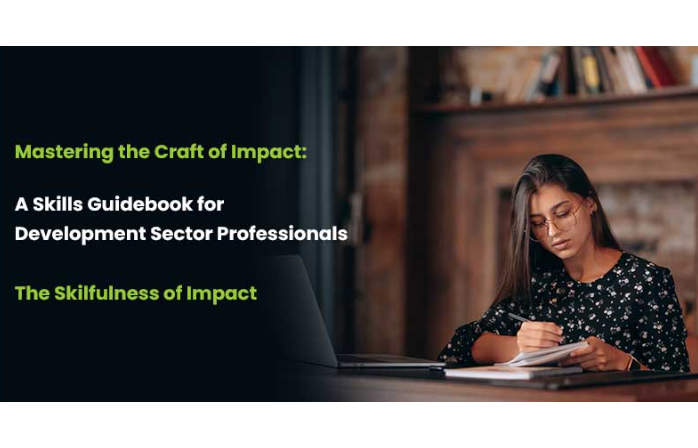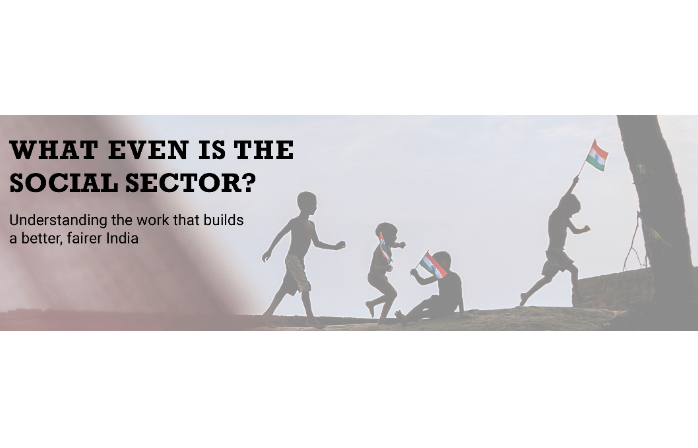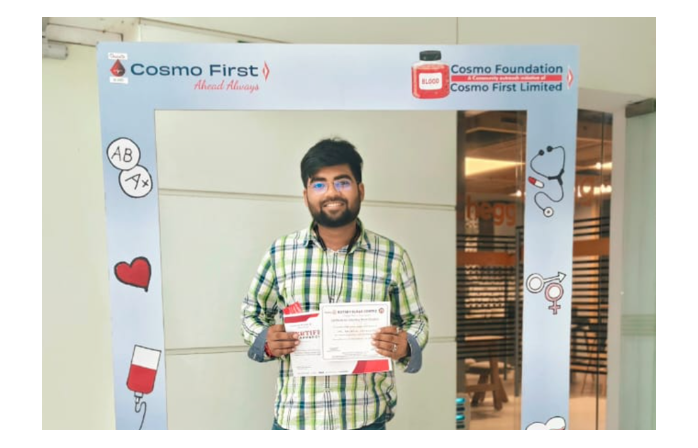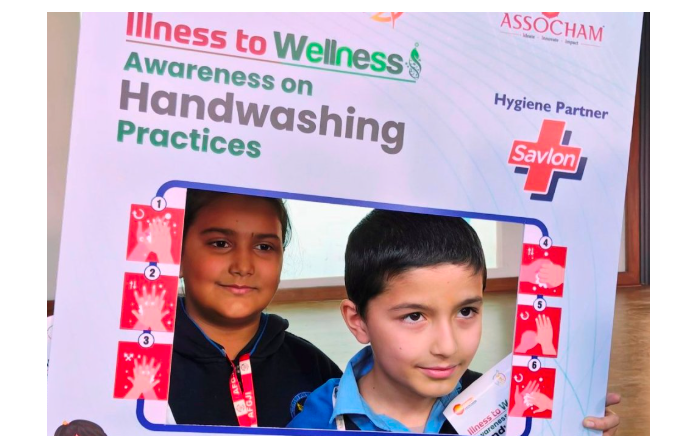The Future of India’s Development Sector: Where are we headed?
By- Pooja Menon
September 8, 2025
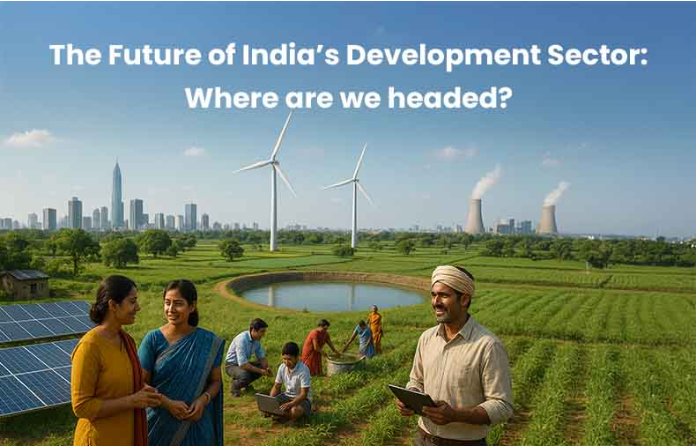
NGOBOX
What happens when a country with the largest youth population starts rethinking ‘development’? In an age where AI is writing scripts, making music, solving equations and reshaping entire industries, there remains a sector rooted firmly in something that can’t be replicated: empathy, trust and contextual understanding.
AI may be the future of productivity. But who’s designing the future of dignity, equity, and access? India’s development sector stands at a pivotal moment. No longer boxed into the narrative of loosely structured charity, it is evolving into a strategic engine of change, powered by innovation, data and collaboration. From the frontlines of climate resilience to inclusive skill development and gender equity, the sector today is not just purpose-driven, but also impact-driven, investable and future-ready.
1. A Sector at the Cusp of TransformationIndia’s development ecosystem is no longer defined by donor cheques and anecdotal success stories. It is becoming a dynamic space where strategic philanthropy, inclusive development and data-led decision making converge. Whether it's building climate-smart villages in Bihar or creating green jobs through EV skilling in Hyderabad, development efforts are increasingly aligned with national goals and local aspirations. This shift is not just timely, it’s transformative.
2. What’s Driving the Change? ➔ Rise of Strategic Philanthropy:Gone are the days of "donate and forget." Today’s CSR leaders and philanthropic institutions are deeply involved in shaping outcomes.
According to Bridgespan’s 2024 report,1 philanthropic collaboratives in India have tripled since 2020, and invested capital has grown sixfold. These collaborations now contribute nearly 10% of all philanthropic funding in India, a clear indicator that this is not CSR fluff, but systems level investment.2
➔ Climate and Green Job Growth:A 2023 Bridgespan–J.P. Morgan report identified a $150 billion opportunity in green sectors such as solar energy, electric mobility, waste management, sustainable agriculture and the built environment by 20303. For India, this means more than green growth, it means community based, hyperlocal and skill-driven employment generation.
➔ Outcome-Oriented CollaborationsFoundations like Gates, Omidyar and CIFF are moving beyond grant cycles into partnerships. They fund rural healthcare, sanitation innovation, education for girls and digital inclusion with an eye on measurable impact and long-term systems change.
3. The Real Bottleneck: Leadership and Capacity GapsThe biggest challenge today is not funding. It’s capacity. Over 97% of Indian NGO leaders acknowledge that leadership development is critical, but less than half have received any funding for it, in the past two years4. Many operate without sufficient reserves to cover indirect costs like HR, legal or technology; creating a burnout spiral that drains talent and undermines sustainability.
If we’re serious about scaling development impact, we must fund the backbone, not just the programs. Capacity building for NGOs, from leadership training to digital infrastructure must become non-negotiable.
As the Bridgespan–J.P. Morgan report puts it: “The opportunity lies in upskilling communities, not replacing them.”
4. The Role of Technology (and Its Limits)Can AI solve the development puzzle? Partially. Yes, AI can analyse data, automate outreach and translate multilingual reports. But it can’t rebuild community trust, mediate in conflict zones or lead menstrual hygiene workshops in rural India. A Bain-Bridgespan study rightly notes: successful green jobs initiatives require 80% human readiness and only 20% tech enablement. In short, AI can assist. But it cannot lead. The future belongs to empaths, strategists and survivors; people who can redesign broken systems from the ground up.
5. Where Do We Go From Here?For CSR Collaborators and Funders: This is your moment to go beyond headline PR and compliance-based CSR. The best partnerships now are those that co-create community owned solutions with long term ROI—return on impact. Think inclusive skilling, climate resilience,
women-led enterprises and digital empowerment. Impact-driven CSR is not just ethical, it’s strategic.
For NGOs and Social Enterprises: It’s time to stop surviving between funding cycles. Invest in your teams, systems and sustainability plans. Seek collaborations that build not just your project portfolio, but your institutional strength. Upskill your workforce, design for scale and measure what truly matters.
For Young Professionals: There is strategy-filled, purpose-rich work waiting for you. From research and policy to design and community engagement; this is a sector where your voice and empathy matter.
6. Final Word: It’s Not About Aid. It’s About Architecture.India’s development sector is undergoing a silent revolution. And as we move toward 2030, the challenge is not to fund more projects, but to build better systems.
In recent years, those working especially at the grassroots have had to do more with less. Less time, less funding, less support. But despite these odds, every time a field worker returns to a flood-hit village, or a teacher keeps showing up in a low-resource school, it’s not just duty. It's belief. In people. In progress. In the possibility that change, though slow, is still worth chasing.
But let's be clear, this isn’t just passion. It’s skilled labour. It’s a profession. One that demands systems thinking and strategic execution too. The future of development won’t be shaped by feel-good campaigns, but by professionals who treat it like the community rooted, system-changing work it is.
This sector isn’t charity. It never was. It’s capitalism with a conscience. It’s jobs, justice and joy woven together, powered by resilience and people who still show up. And its future? Is humans.
----------------------------------------------------------------------------------------------------------------------------------1 Bridgespan’s SE Asia Green Jobs Report
2 “Philanthropic Collaboratives Will Fuel Greater Social Impact in India” — Bridgespan (Feb 7, 2024) bridgespan.org+4bridgespan.org+4ssir.org+4bridgespan.org
3 “Promoting Equitable and Inclusive Green Job Growth in Southeast Asia” — Bridgespan & J.P. Morgan (May 16, 2023) avpn.asia+3bridgespan.org+3bridgespan.org+3
4 Data on NGO leadership funding gaps — Bridgespan India report (2017 and 2021)
Source

Pooja Menon is a development communicator and postgraduate in Media & Development Studies. With roots in psychology and an eye for both systems and emotions, she writes at the intersection of impact, lived experiences and the quiet shifts that rarely make it to reports, but shape the sector every day. An art enthusiast and a full-time learner, who believes impact starts with listening; to people who still show up, to systems that need fixing and to stories that highlight the human infrastructure behind real change.
Don't miss any updates!
© Renalysis Consultants Pvt Ltd


.jpg)
